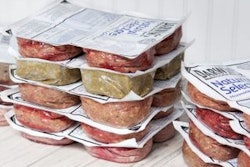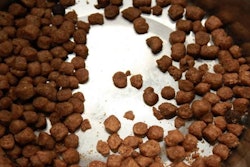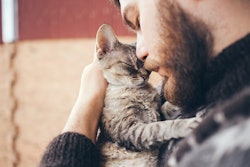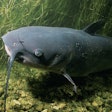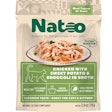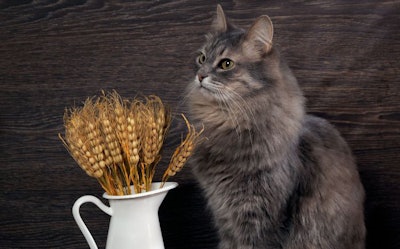
If you’ve ever eaten a rodent, you know they aren’t sweet or starchy, meaning they are low in carbohydrates. Cat’s wild ancestors didn’t get many carbs from their small mammal and birds diets. Before the rise of the pet food industry, domesticated cats didn’t eat many grains or sugars either, and their biology seems to reflect this. However, that doesn’t mean cats can’t handle some carbohydrates in their diets.
Veterinary Sciences published a literature review of scientific research on cats and carbs. In the review, scientists from the University of Guelph in Canada and Ghent University in Belgium compiled the results of research on how cats’ digest carbs, along with what this means for cat food manufacturers.
Cat food and carbohydrates
One study found that commonly available, conventional dry cat foods contain between 20 and 40 percent metabolizable energy from carbohydrates, such as grains, potatoes and legumes. However, cats have a limited ability to digest these starches. Researchers have found that the enzymes responsible for breaking down carbohydrates are weaker or missing in cats, compared to dogs, humans and other omnivores. For example, amylase is the enzyme that makes a cracker turn sweet while a human chews it. This enzyme is weak in cat saliva and in their pancreas and chyme, the mixture of digestive juices and food that passes from the stomach to the intestines.
Once cats do manage to digest carbohydrates, they can’t use the end products, such as glucose, as well as dogs do. Scientists found that uptake of the simple sugar, or monosaccharide, glucose took twice as long in cats as in dogs. Cats also seem to lack the ability to alter their uptake of digested carbs based on the quantity in their diet, which dogs are able to do.
Digestion of carbohydrates in cat food
However, the authors of the literature review noted that research is inconclusive on what concentration of sugars is needed to reach maximum uptake in cats’ intestines. That means scientists don’t know if the carb concentration in cat food is beyond or below what cats’ digestive systems can use. One early study, from 1977, did find that cats could digest 40 to 100 percent of the starch in cat foods, depending on the carbohydrate source.
These carbs must be ground and cooked to be highly digestible, though, as they are in extrusion or other cat food processing methods. One study found that large amounts of poorly digestible carbs can lead to microbial fermentation in cats’ colons. Therefore, the researchers concluded that high carbohydrate intake may lead to diarrhea, flatulence and bloating in cats.
One carb cats can seemingly do without is sugar. Neurological studies of cats’ taste sensations found that they can detect salty, bitter, sour, amino acid and nucleotide tastes, but their nerves didn’t respond to sugar at all. Cats couldn’t tell the difference between sugar water and plain water in another study. Genetic analysis found that cats lack a functional copy of a certain gene, Tas1r2, which means they can’t form sweetness sensory receptors, like the taste buds on human tongues.
Alternative cat foods
While raw meat cat food diets have grown in popularity, not much research has been conducted on large populations of cats fed the diets over long periods of time. One study found greater apparent digestibility of dry matter, organic matter, crude protein and gross energy in kittens few raw meat diet, compared to a heat-processed cat food. However, other studies have found higher levels of potentially harmful microorganisms, including Salmonella and E. coli, in raw meat cat food.
Ultimately, the authors of the literature review concluded that there is still much debate about the appropriate level of carbohydrates in cat food, as well as how those carbs affect feline health. Many commercial cat foods contain higher carbohydrate levels than a feral cat would eat. However, there is no data on what carbohydrate level is optimal for domestic cats, especially considering how lifestyle differences between house cats and alley cats influence their dietary needs.



